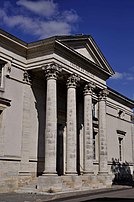
Rouen is a city on the River Seine, in northwestern France. It is the prefecture of the region of Normandy and the department of Seine-Maritime. Formerly one of the largest and most prosperous cities of medieval Europe, the population of the metropolitan area is 702,945 (2018). People from Rouen are known as Rouennais.

Doubs is a department in the Bourgogne-Franche-Comté region in Eastern France. Named after the river Doubs, it had a population of 543,974 in 2019. Its prefecture is Besançon and subprefectures are Montbéliard and Pontarlier.

Besançon is the prefecture of the department of Doubs in the region of Bourgogne-Franche-Comté. The city is located in Eastern France, close to the Jura Mountains and the border with Switzerland.

Côte-d'Or is a département in the Bourgogne-Franche-Comté region of Northeastern France. In 2019, it had a population of 534,124. Its prefecture is Dijon and subprefectures are Beaune and Montbard.

Haute-Saône is a department in the Bourgogne-Franche-Comté region of northeastern France. Named after the river Saône, it had a population of 235,313 in 2019. Its prefecture is Vesoul; its sole subprefecture is Lure.

Dijon is a city that serves as the prefecture of the Côte-d'Or department and of the Bourgogne-Franche-Comté region in eastern France. As of 2017 the commune had a population of 156,920.

Luxeuil-les-Bains is a commune in the Haute-Saône department in the region of Bourgogne-Franche-Comté west of Mulhouse in eastern France.

Arbois is a commune in the Jura department, in the Bourgogne-Franche-Comté region, eastern France. The river Cuisance passes through the town, which centres on an arcaded central square where one can sample the local wines.

Auxonne is a commune in the Côte-d'Or department in the Bourgogne-Franche-Comté region of eastern France.

Mâcon, historically anglicised as Mascon, is a city in east-central France. It is the prefecture of the department of Saône-et-Loire in Bourgogne-Franche-Comté. Mâcon is home to near 34,000 residents, who are referred to in French as Mâconnais. The city gave its name to the nearby vineyards and wine 'appellation'.
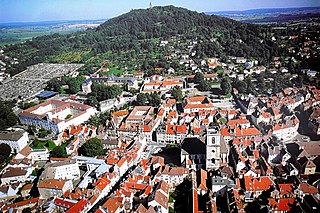
Vesoul is a commune in the overwhelmingly rural Haute-Saône department, of which it is the prefecture, or capital, in the region of Bourgogne-Franche-Comté located in eastern France.
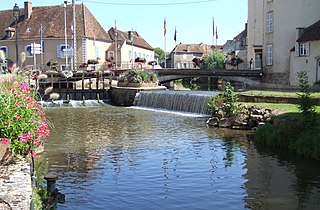
Charolles is a commune in the Saône-et-Loire department in the region of Bourgogne-Franche-Comté in eastern France. Since 2004 is Charolles part of the Charolais-Brionnais Country.

Lure is a commune in the Haute-Saône department in the region of Bourgogne-Franche-Comté in eastern France.

Bourbon-Lancy is a commune in the Saône-et-Loire department in the region of Bourgogne-Franche-Comté in eastern France.
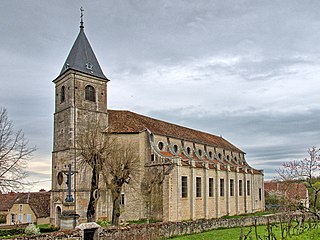
Gy is a commune in the Haute-Saône department in the region of Bourgogne-Franche-Comté in eastern France.

Grammont is a commune in the Haute-Saône department in the region of Bourgogne-Franche-Comté in eastern France.
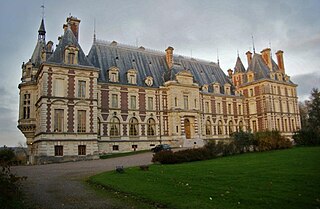
Villersexel is a commune in the Haute-Saône department in the region of Bourgogne-Franche-Comté in eastern France.

François Devosge, François III Devosge or Claude François III was a French portraitist and history painter. Among his students were François Rude, Pierre-Paul Prud'hon and Claude Hoin. He is best known for his work as the founder of the École de Dessin de Dijon. His son Anatole Devosge (1770–1850) was also a painter, whilst his father Claude François Devosge (1697–1777) was a sculptor and architect.

The Library of Gray was founded in 1799 after the confiscation of the properties of the Catholic Church. The library first opened in an old convent before moving to a proper building adjoining the city hall in 1859. The library is divided into two sections. One section stores only documents that cannot be borrowed and the second contains documents that can be borrowed by the public.




